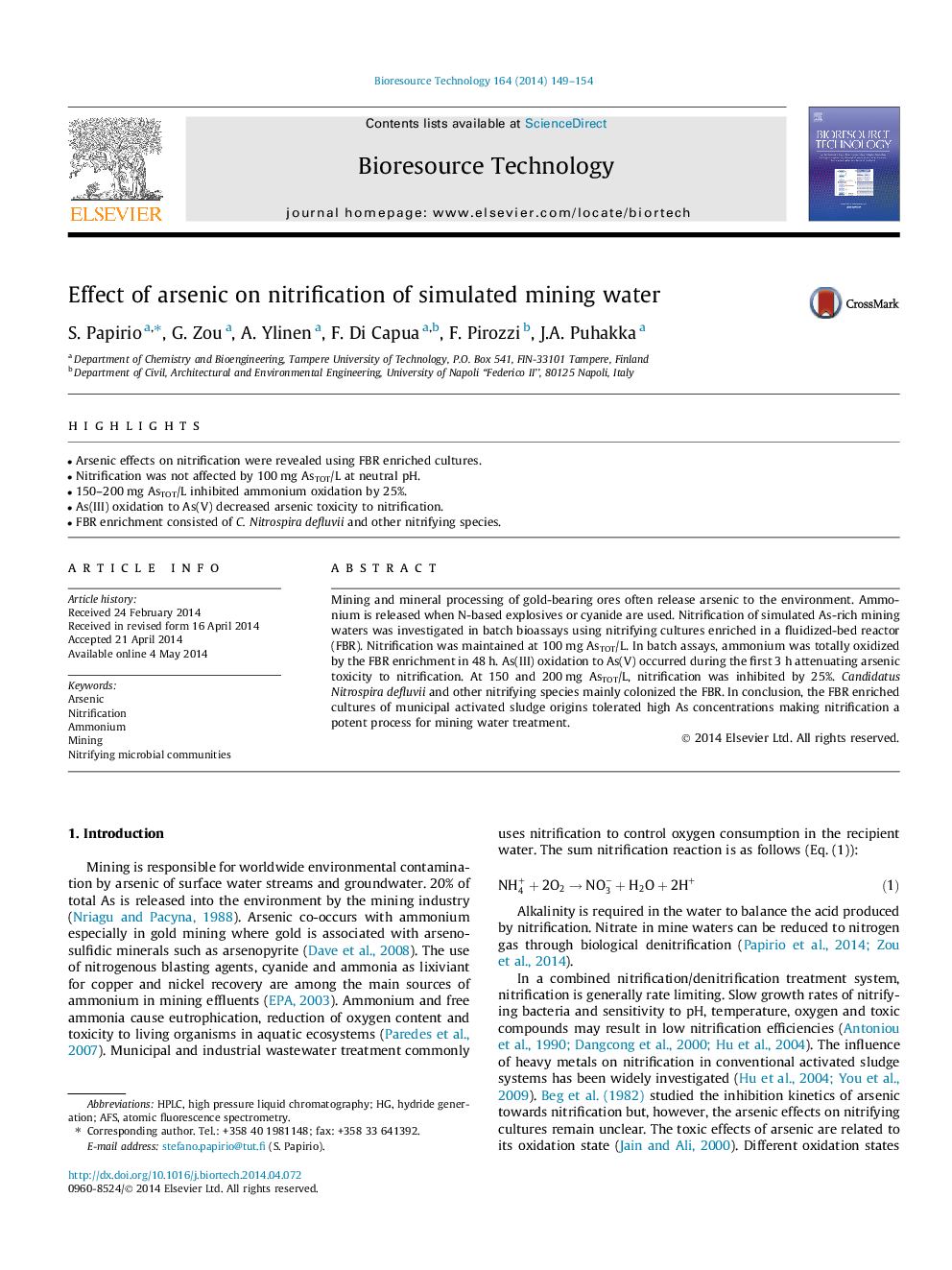| Article ID | Journal | Published Year | Pages | File Type |
|---|---|---|---|---|
| 7077545 | Bioresource Technology | 2014 | 6 Pages |
Abstract
Mining and mineral processing of gold-bearing ores often release arsenic to the environment. Ammonium is released when N-based explosives or cyanide are used. Nitrification of simulated As-rich mining waters was investigated in batch bioassays using nitrifying cultures enriched in a fluidized-bed reactor (FBR). Nitrification was maintained at 100Â mg AsTOT/L. In batch assays, ammonium was totally oxidized by the FBR enrichment in 48Â h. As(III) oxidation to As(V) occurred during the first 3Â h attenuating arsenic toxicity to nitrification. At 150 and 200Â mg AsTOT/L, nitrification was inhibited by 25%. Candidatus Nitrospira defluvii and other nitrifying species mainly colonized the FBR. In conclusion, the FBR enriched cultures of municipal activated sludge origins tolerated high As concentrations making nitrification a potent process for mining water treatment.
Keywords
Related Topics
Physical Sciences and Engineering
Chemical Engineering
Process Chemistry and Technology
Authors
S. Papirio, G. Zou, A. Ylinen, F. Di Capua, F. Pirozzi, J.A. Puhakka,
